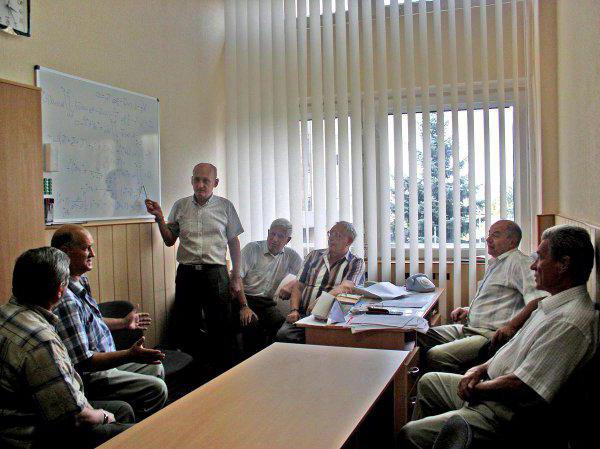At many state and commercial enterprises, as one of the local documents, the Regulation on structural divisions is being developed. In this act, in addition to issues related to the development of the team, the rules of staff communication, the procedure for the participation of employees in the distribution of profits, especially the advanced training of employees and so on can be highlighted. Let us further consider in detail how the Regulation on the structural unit is compiled. A sample document will also be presented in the article. 
Features
The document under consideration acts as an organizational and technological act. It defines:
- The place of the department in the enterprise system.
- Functional load, technological responsibility.
- Interaction with other departments.
- Regulatory documents that govern the activities of the organization.
Drawing up an act is carried out directly in the department of the enterprise. Responsibility for this lies with his superior. The head of the organization must review and sign the document. An enterprise may have one department or several. The creation of units should be carried out on the basis of expediency. Their activities should be justified and effective.
Sections
Structural subdivision (examples: human resources, accounting, finance, etc.) performs certain functions. When compiling the documentation, the specifics of the activity, the schedule, the presence / absence of material liability of employees are taken into account. The act under review contains the following sections:
- General Provisions
- Tasks.
- Structure.
- Functions
- Interaction with other departments.
- Responsibilities, rights and authority.
- A responsibility.
Section "General Provisions" establishes the subordination of the department to a specific person. It may also define the scope of the document. In particular, we are talking about the requirements for the content, the rules for the preparation, adoption, registration, additions / amendments to the act. It also establishes the legal status of the unit. The section "Tasks" formulates key areas of the department. Any separate unit has the responsibility to resolve issues taking into account the requirements of the present. So, the tasks of the personnel department may involve not only the reception and dismissal of employees. His responsibilities may include a comprehensive solution to the issues of forming an effective team. 
System and functions
This section highlights the organization of the department. In particular, the number of employees, the specific responsibilities of employees are established. In the process of compiling this section, the distribution matrix of managerial functions can be applied. If it is absent, then the information from the Qualification Directory of the posts of chiefs, specialists and other employees is applied. When establishing the functions of employees, you can also use the standards of GOST.
Service communications with other departments
The organization of work should be carried out in such a way that the relationship between different parts of the enterprise is as effective as possible. When drawing up the section, it is necessary to take into account that it is not necessary to describe the interaction of individual employees, but entire departments. Therefore, it is necessary to focus, first of all, on official relations between bosses.In the section you can indicate the need for coordination of interactions between ordinary employees of different departments. That is, the Regulation on structural units determines whether an employee needs to receive permission to interact with other specialists. Separately, it is stipulated with whom exactly these or other events should be coordinated: with your boss or an official of another department.
Competence and Responsibility
The sections "Responsibility" and "Rights and Obligations" are compiled in accordance with the functions assigned to the department. The contents of these sections can be taken from the job descriptions. However, it should be borne in mind that the Regulation on structural divisions empowers, establishes the responsibilities and duties of not a specific employee, but the entire department as a whole. If desired, you can paint them with respect to each employee. However, it is more advisable to establish the powers and responsibilities for all employees, separating them separately for the head of the department. Responsibility can be established individually and collectively. The first, respectively, will relate to the boss, and the last to employees. Approval of the Regulation on the structural unit is carried out after its approval by the lawyer of the enterprise. 
Content Requirements
The Regulation on structural divisions is not considered a binding document provided for by labor legislation. But it is in this act that the distribution of tasks, duties and functions between departments and employees within one enterprise is fixed. Content requirements can be set by local documents (standards). If they are not available at the enterprise, then you can use the "template" Regulation on the structural unit - a sample. In any case, in the process of compiling the document, it must be assumed that the following information must be present in it:
- A place in the enterprise system (a separate subdivision or part of a management, department, etc.).
- Normative base. The documents governing the activities are indicated here (Federal Law, Charter, etc.).
- Department structure.
- Immediate boss.
- Key tasks
- Responsibility, duties, rights.
In order to avoid disputes over competence issues, it is necessary to carefully consider the content of the document, try to compile it succinct and detailed.
Regulation on the structural unit of the organization: appointment
The document acts as an internal (local) act. It is compiled for organizational and legal assignment to the department of managerial functions, a rational division of competence between employees. The act defines the responsibility and duties of the boss. The provision acts as an integral element of the enterprise documentation. It is the basis for the development of standard, personal (if necessary) job descriptions of employees. The document is developed in accordance with applicable organizational and management acts.
Items
The provision includes:
- Title page.
- Title.
- The main purpose.
- The regulatory basis of the department.
- Description of the structure.
- Division functions and responsibility distribution.
- Information and material support.
- Interaction.
- Confidentiality and paperwork.
- Ensuring safety and proper working conditions.
The composition and order of sections, the names of individual blocks may vary in accordance with the specifics of the unit. 
Department Description
The section "Primary Purpose" describes:
- The location of the unit in the enterprise system.
- Subordination.
- Special purpose.
- Rules for the formation and liquidation of the department.
In the block "Normative basis of activity" is a list of documents in accordance with which the Regulation is developed, and the unit will operate.The next section provides information specific to the department. It, in particular, describes:
- The structure of the unit, the procedure in accordance with which it is formed and approved.
- Rules of appointment to the post of chief, release and replacement. If necessary, qualification requirements are described (length of service, category, education).
- Tasks of the department head.
- The presence and number of deputies, the procedure in accordance with which job responsibilities are distributed between them.
- Rules for the approval of the Regulations governing the activities of structural units of the unit, service instructions for employees.
- The order in which the staff of the department is formed.
Ways to reflect information
The structure of the unit may be described:
- Graphical method. It is a schematic reflection of structural units. Administrative relationships are highlighted by solid lines, functional - by dashed lines.
- In a textual way. In this case, an enumeration of structural units (groups of employees performing duties in specific areas, or individual employees) is used, a description of the interactions is given.
Functions and responsibilities
This section describes:
- The main activities or work that the department must carry out to implement the tasks assigned to it.
- The procedure for the distribution of responsibility and functions between employees.
- Responsibilities, individual rights of the head in accordance with applicable regulations. It also describes his responsibility.
Functions are stated in order of priority or importance. The Regulation, as a rule, stipulates that the responsibility of employees is determined by their job descriptions. 
Interaction
This section defines:
- The relationship of the unit with other departments and officials at the level of information and material flows. The latter include relations relating to activities, the movement of values. Information interaction is carried out through the transfer of documentation.
- Dates and frequency of work, provision of information, material assets, etc.
- The procedure in accordance with which the resolution of conflict situations arising between departments is carried out.
Information and material support
This section contains information about:
- Internal and external sources, the procedure for equipping the department with furniture, equipment, organizational and technical means and so on.
- Keeping records and ensuring the preservation of values.
- The procedure for providing regulatory documents, literature and other information resources.
Confidentiality and record keeping
This block includes information on the nomenclature of those cases that the unit conducts. This section also indicates the person who is responsible for their production. In case of a large volume, the list of cases is given in a separate document (annex). If necessary, the section includes types of confidential information, rules for handling them and responsibility for disclosure.
Ensuring safe working conditions
This section provides rules for maintaining the proper sanitary and hygienic condition of the premises assigned to the unit. It also describes how to ensure the safety of activities. The section may contain references to regulatory documents establishing such rules. Mandatory persons are indicated.
Drafting and approval of the document
The development of the Regulation is carried out by the unit independently. As a rule, this task is assigned to the head of the department. First, a draft document is compiled. It is agreed with the higher administration and interested employees.The latter, in particular, may include:
- Heads of departments with which the department interacts.
- Head of Human Resources.
- Head of the legal department.
A specific list of matching units and employees is established by the boss. He also organizes familiarization of employees with the Regulation.
Changes, cancellation and revision of the document
Adjustments to the Regulation are made by the heads of departments in the following cases:
- With a planned revision of the document.
- When renaming, reorganizing a department, changing its subordination, staffing adjustments.
- At the initiative of employees and the head of the unit to improve performance.
- When changing the regulatory framework.
The procedure in accordance with which changes are agreed upon is similar to that established for the adoption of the Regulation itself. The term for making adjustments is 1 month. If it is necessary to make a large number of changes, a new version of the Regulation is drawn up. A planned revision of the document is carried out at least 1 time in 5 years. Cancellation of the Regulation is made upon adoption of the new edition or in the event of liquidation of the department. If necessary, changes are made to the statutory or constituent documents of the enterprise.
Sight
The head of the enterprise determines the list of employees who must put the stamps of approval in the Regulation, in accordance with the order on the distribution of duties. In order to avoid inaccuracies, as well as duplication of certain official interactions, functions and, accordingly, to prevent probable disagreements between department heads subsequently, the practice is to endorse documents for specific services by the administration of those sections of the enterprise with which they are in constant official communication. If there are more than three vultures, then they are issued on a separate page or a “Coordination Sheet” is created. Some enterprises provide for the endorsement of the Regulations by the head of the legal service or legal adviser. The signing of the document is, as mentioned above, by the General Director. This right, however, may also be vested in other senior staff. They can be deputy directors, ensuring the functioning of groups of departments. 
Additionally
All employees of the enterprise should familiarize themselves with the approved Regulation on divisions. Employees are required to sign their documents. For this, a special column is provided on bringing or familiarizing employees with the Regulation. Signatures are put in seniority - first the department head signs, then all the employees. To fix the familiarization with the document, the method provided for job descriptions can be used. It consists in drawing up a separate sheet to bring the Regulation to the attention of employees. The basis for making changes to the document is the order of the director of the enterprise.
The methods and procedure for its design are similar to those established for adjustments to job descriptions. Along with this, it is necessary to take into account an important point. Making adjustments to the Regulation on units may, and in some cases must necessarily entail a change in the job descriptions of employees. Otherwise, there will be inconsistency in the activities of the entire enterprise. The regulations on the units are not necessary, but it is highly desirable to develop, because it significantly optimizes the activities of the departments. With the help of this document, the interaction between the employees of the enterprise, heads and deputies becomes more clear and coherent. This document greatly simplifies the control and management of the enterprise.

